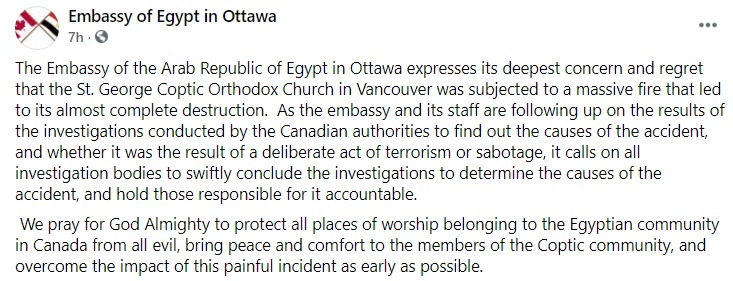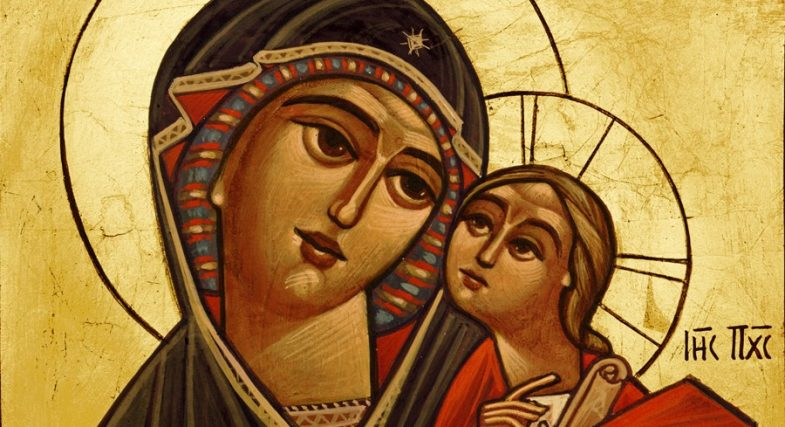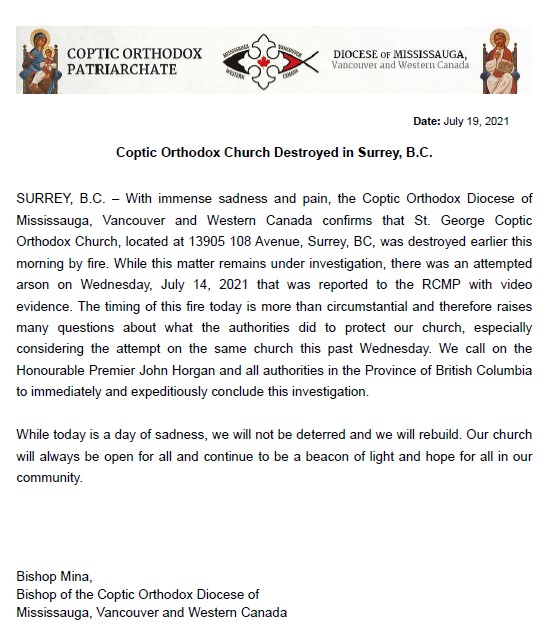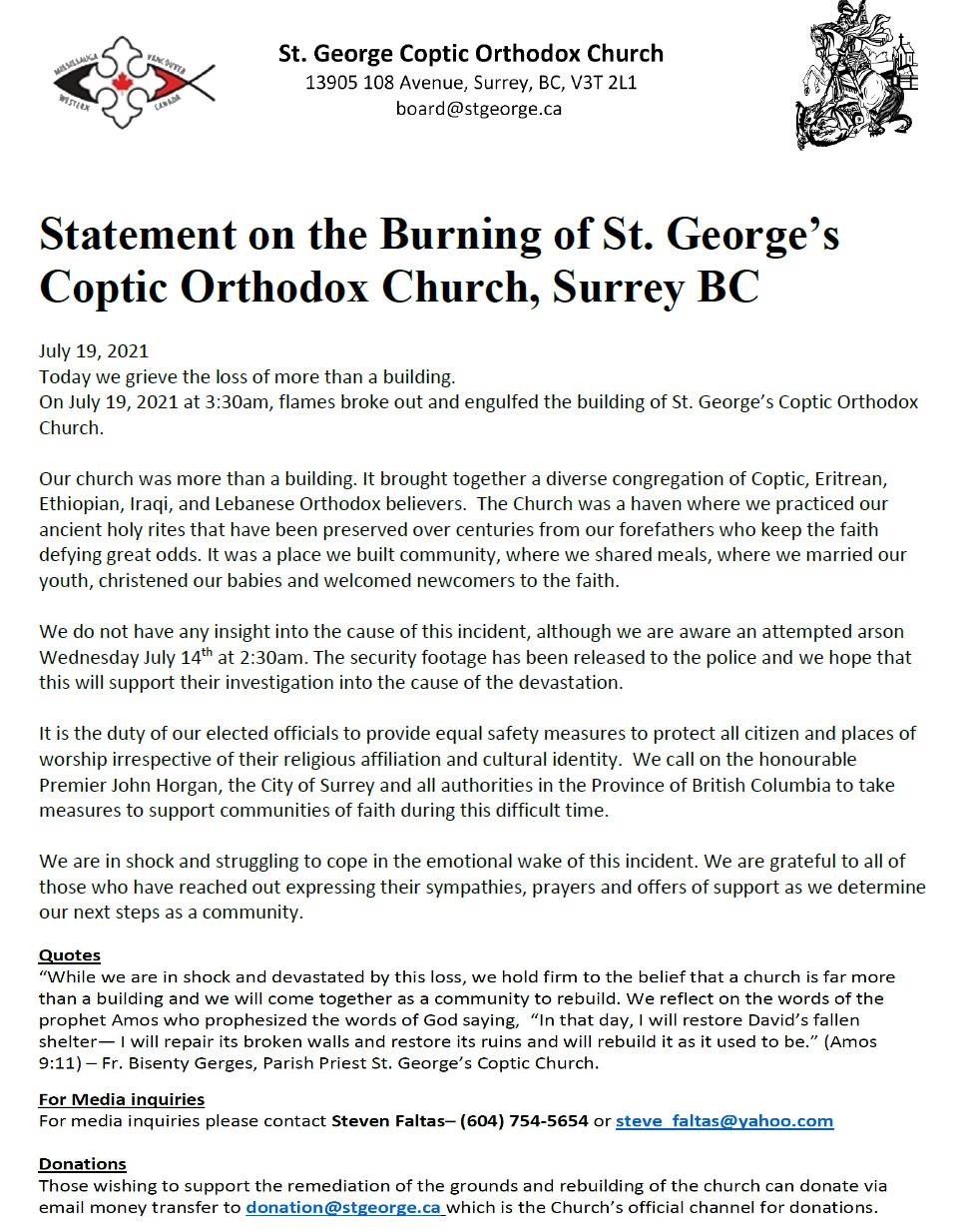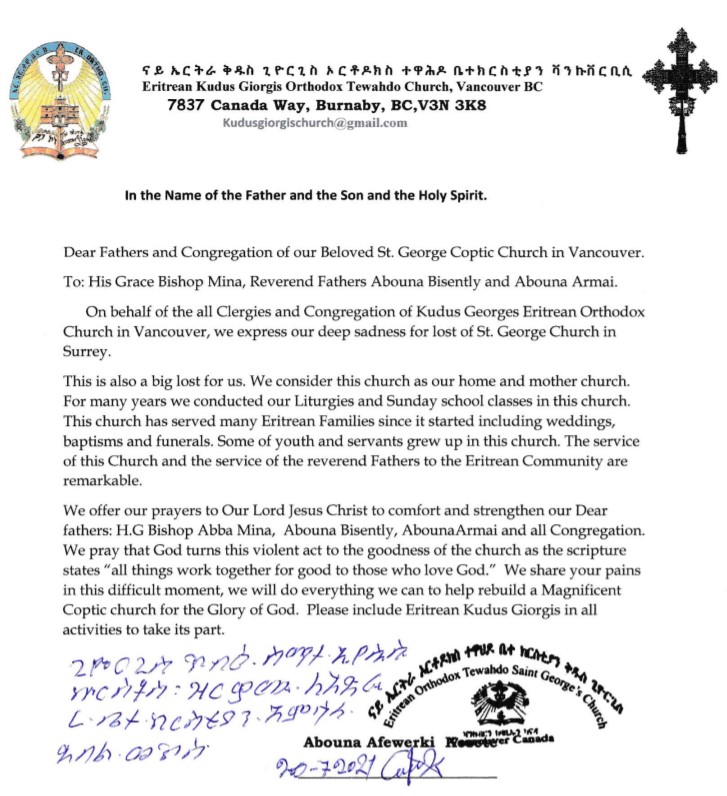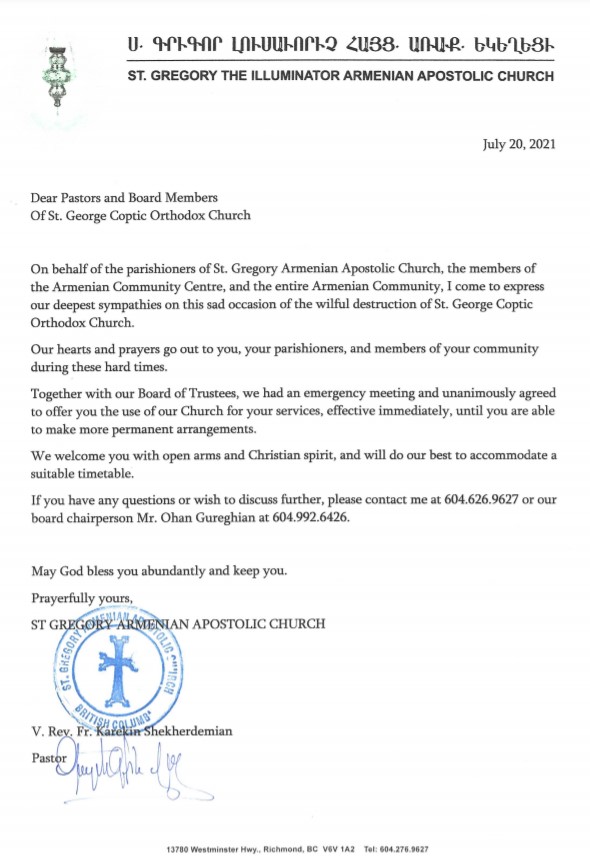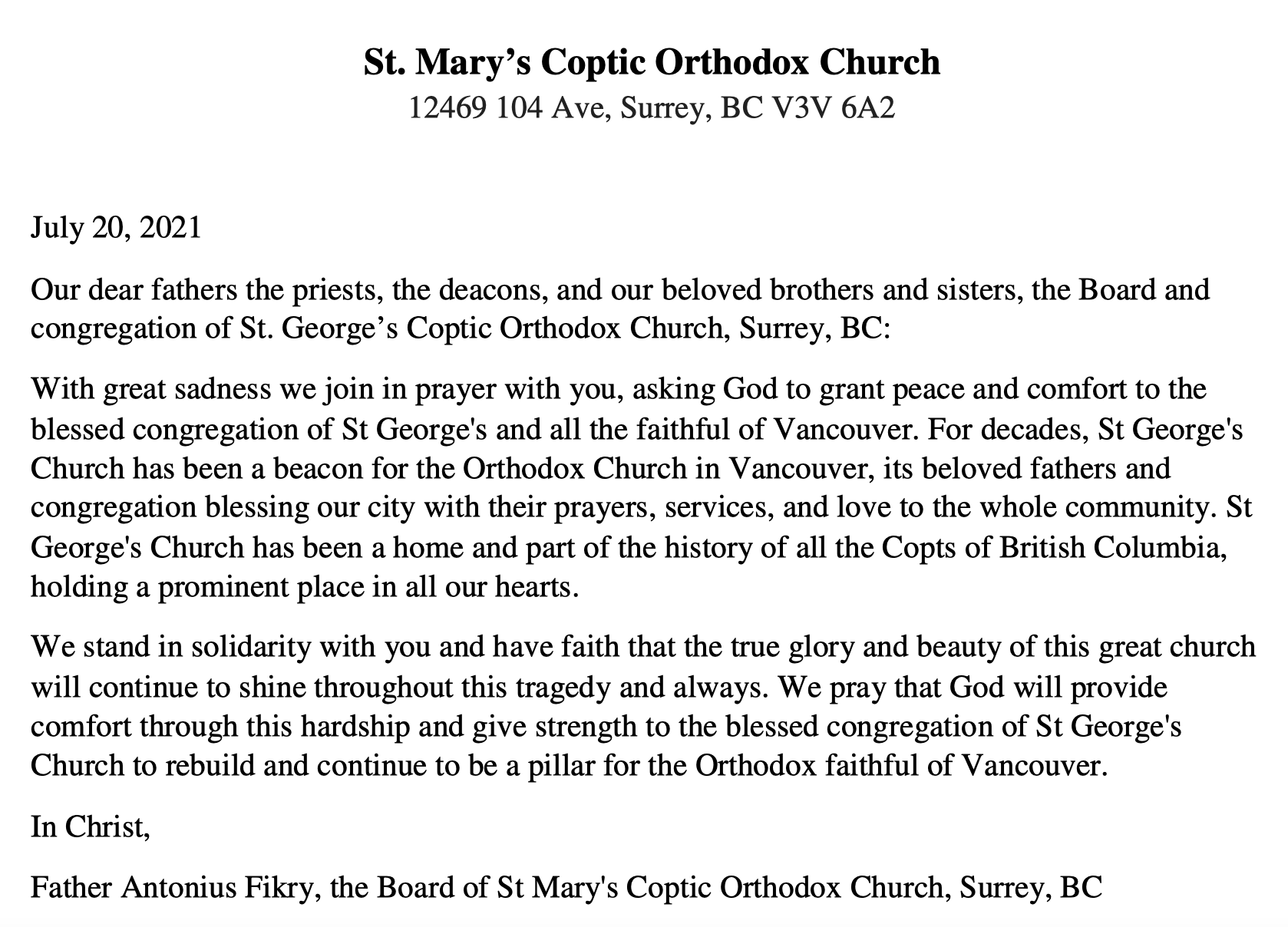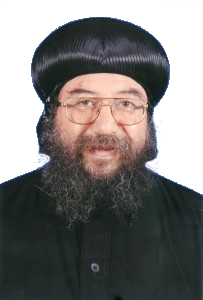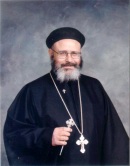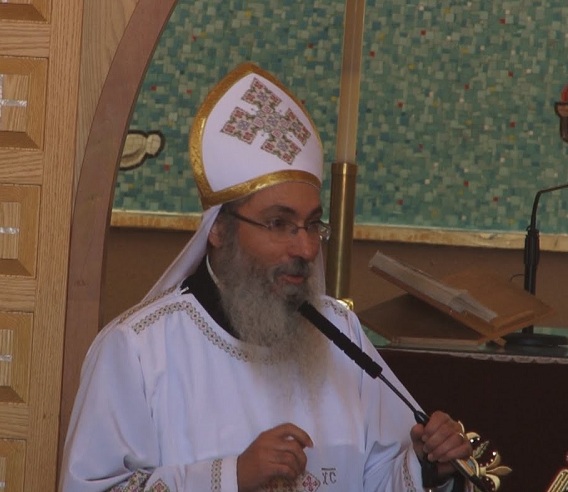we mourn & pray
On July 19, 2021, the congregation of St. George Coptic Orthodox Church in Surrey, B.C., woke up to news that their church had been burned to the ground. Flames broke out shortly before 3:30 AM and by the time firefights arrived, the building was engulfed in flames that were visible for miles. This nearly 70-year-old building was much more than just a building; Bishop Mina said in a statement, “… it was a place [where] we built community, where we shared meals, where we married our youth, baptized our babies and welcomed newcomers to the faith…” Our Church brought together a diverse congregation of Coptic, Eritrean, Ethiopian, Iraqi and Lebanese Orthodox believers. While we are thankful to all those who have reached out and offered their churches as a temporary location where our services can continue to be held, we hold strong in the belief that our Lord Jesus Christ will “restore its ruins and will rebuild it as it used to be.” (Amos 9:11). We rely on your generosity to be able to once again build a church that will be a beacon of light to all those around it and serve the needs of its congregation and the surrounding community.
Update on August 30, 2021 4:00 PM: Surrey RCMP issued a press release regarding their investigation into the fire that destroyed our church. On Thursday August 26, 2021 they arrested a 35-year old woman and charged her with two counts of arson in connection with the incidents on July 14, and July 19, 2021.
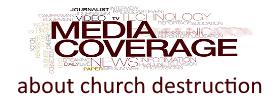
Message from Bishop Mina
Press release from church board
Message from Eritrean Kudus Giorgis Orthodox Tewahdo Church
Message from Coptic Orthodox Bishops of North America
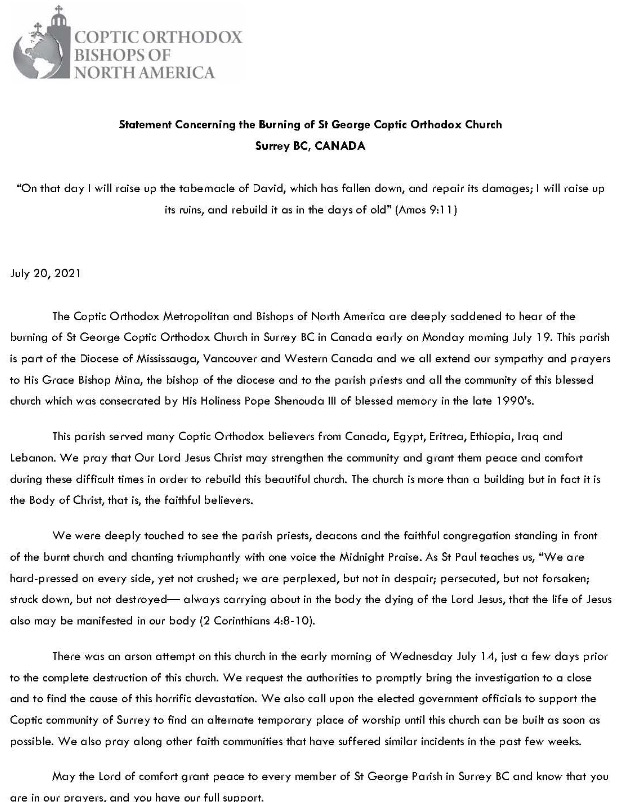
Message from St. Gregory the Illuminator Armenian Apostolic Church
Arabic letter from Egyptian Embassy in Ottawa
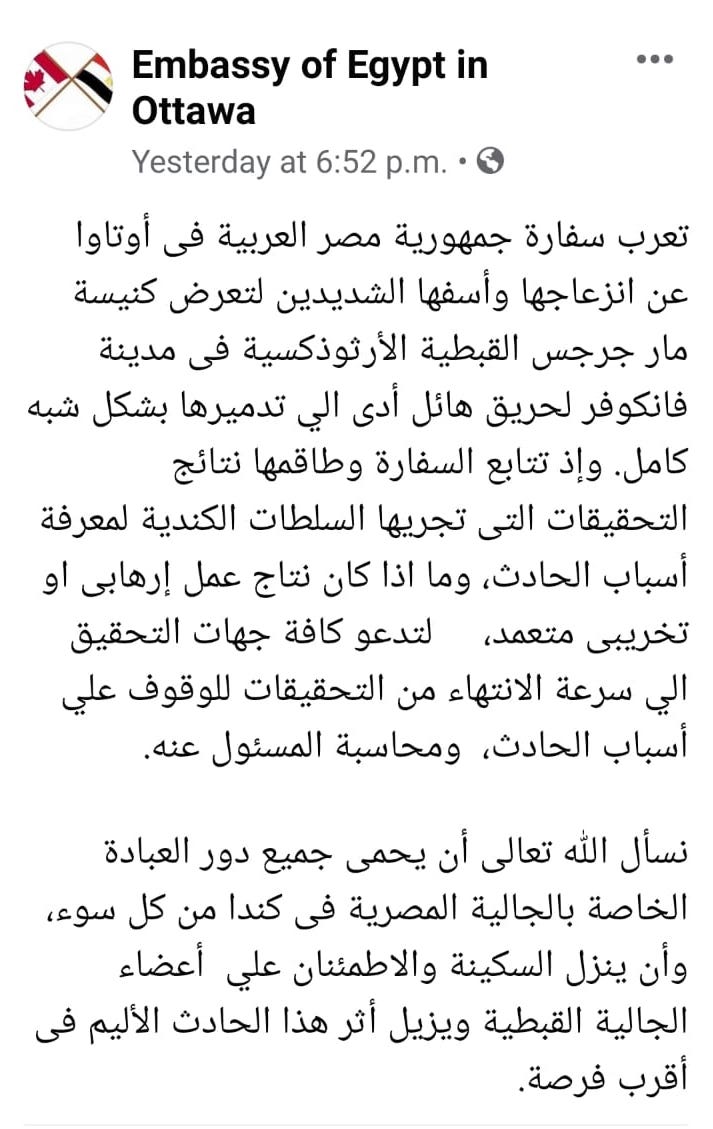
English letter from Egyptian Embassy in Ottawa
